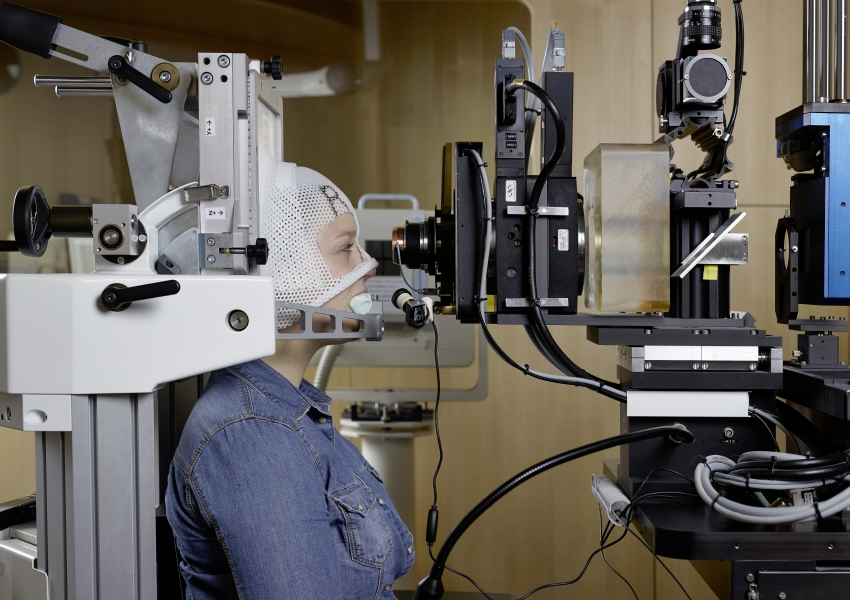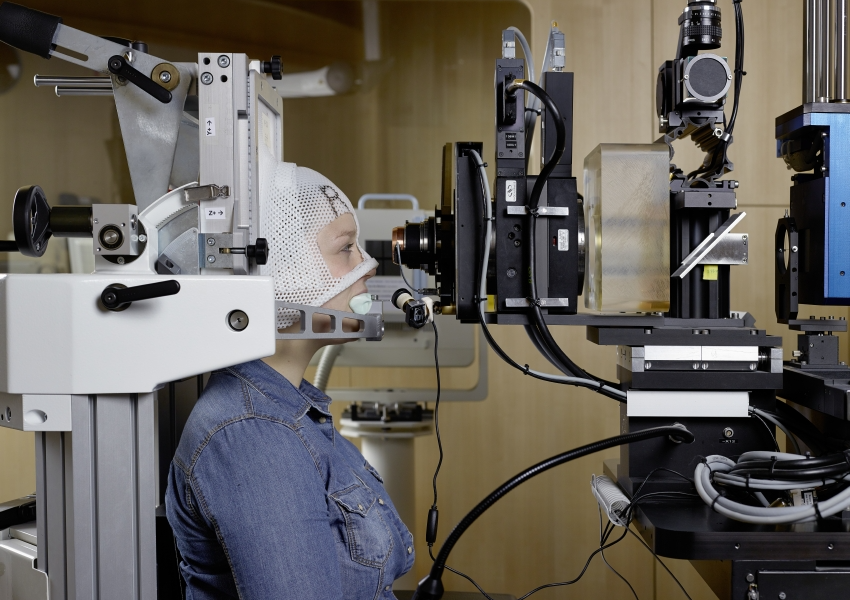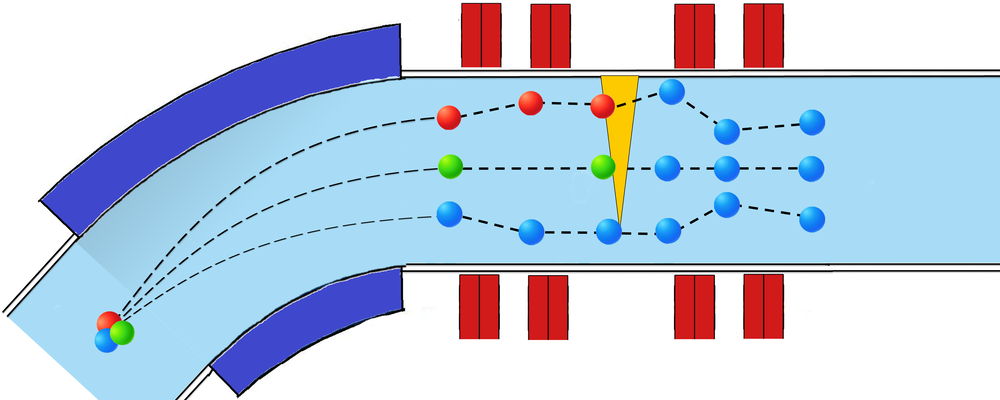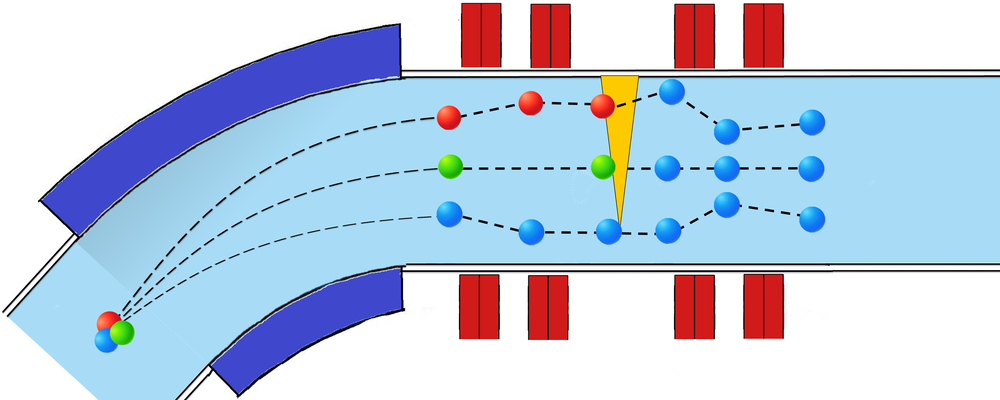Express Delivery of Proton Therapy
Proton cancer therapies use highly focused beams to deliver ultrahigh doses of proton radiation directly to tumors. These beams are produced using particle accelerators called cyclotrons. Cyclotrons produce proton beams of very high energy, so to use them clinicians must tailor the energies of the beams to therapy-appropriate levels. Now researchers have developed an approach for this energy tuning that avoids reducing the radiation dosage, an issue with previous methods [1]. The researchers behind the technique say that it could allow clinicians to halve treatment time, potentially increasing patient comfort levels during treatment. Maintaining the dosage is especially important for situations where patients must remain perfectly still, such as during the treatment of optical tumors.
For cancer patients undergoing radiation therapies, proton therapy can be advantageous over x-ray radiation therapy, which has been around for longer, as the proton beam delivers more of its energy directly to the tumor. This precision reduces damage to surrounding healthy tissue and can mitigate unpleasant, short-term side effects, such as nausea and fatigue, as well as long-term ones, such as memory problems, cardiovascular morbidity, and secondary cancers.
The efficacy of proton-therapy treatment increases with the radiation dose. Improved efficacy could allow oncologists to reduce treatment times, increasing their capacity to treat patients. It could also minimize the need for extensive shielding around the facility. But the techniques currently used to create therapy-appropriate beams significantly reduce the number of protons in a beam.
To reduce a proton beam’s energy from the 250 MeV produced by a cyclotron to the 70 MeV required for some treatments, hospital facilities place a special device, called an energy degrader, in the beam’s path. This device is made from graphite and reduces the beam’s average energy by scattering individual protons. But in doing so it increases the particles’ energy spread. As such, some protons are still too energetic for use in treatments and must be removed via other methods. Vivek Maradia of the Paul Scherrer Institute in Switzerland and his colleagues wondered if they could remove that requirement.
Maradia and his colleagues adapted an approach used in high-energy-physics experiments. After the energy degrader, the researchers placed a wedge-shaped polyethylene device that varied in width from 3.8 mm at one end to a sharp point at the other.
As the particles pass through such a wedge they should lose energy, with their exact energy loss depending on their energy prior to entering the wedge: higher-energy protons should lose a larger fraction of their energy than lower-energy ones. As such, protons exiting the wedge should have energies close to one another. Using this device, the researchers showed that they could produce protons with therapeutic energies, and that they could do that without increasing the energy spread, minimizing particle loss.
That loss minimization means that more particles could potentially reach a target tumor, Maradia says. A possibility that the group tested using a clinical proton beam designed for treating ocular tumors. With the clinical beam the researchers found a doubling in proton transmission for their setup versus the old one. That increase matched predictions from the team’s simulations that indicated that their updated design should achieve a 100-fold increase in the number of protons contained in a 70 MeV beam.
Diktys Stratakis, a particle-accelerator designer at Fermi National Accelerator Laboratory in Illinois, points out that this method was also used to enhance the performance of Fermilab’s Muon g-2 experiment (see Special Feature: The Muon g-2 Anomaly Explained). David Neuffer, an accelerator physicist also at Fermilab, says that a medical proton beamline is a very interesting application of the wedge device used for muon beams. The researchers “seem to be able to use it to achieve large improvements in a medical application,” he says.
–Rachel Berkowitz
Rachel Berkowitz is a Corresponding Editor for Physics Magazine based in Vancouver, Canada.
References
- V. Maradia et al., “Demonstration of momentum cooling to enhance the potential of cancer treatment with proton therapy,” Nat. Phys. (2023).







